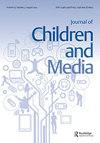Children’s documentaries: distance and ethics in European storytelling about the wider world
IF 2.1
3区 心理学
Q2 COMMUNICATION
引用次数: 0
Abstract
ABSTRACT The material challenges of funding, commissioning and distribution that are well known to inhibit production of children’s factual content about other countries and cultures operate in parallel with challenges arising from the moral responsibilities inherent in what Roger Silverstone called “the problem of proper distance”. By that he signified a “moral category” requiring filmmakers to provide “context as well as imagination” and be willing to “recognise the other in her sameness and difference”. “Distance” and “difference” have become at once more significant but also more ambiguous at a time of mass forced migration, in which traditions, religions and cultures from distant places are brought together in physical proximity. Based on input from cross-cultural dialogues, screenings and interviews involving European producers of children’s documentaries, this article explores dilemmas and experiences faced in representing the backgrounds and stories of children who arrived in Europe from Syria, Iraq, Afghanistan and elsewhere in the mid-2010s. It shows the resonance of Silverstone’s thinking by revealing that many practitioners themselves apply notions of closeness and distance, both physically and metaphorically, in their choices about combining the familiar and unfamiliar and co-creating content with child participants. IMPACT SUMMARY a. Prior State of Knowledge: Existing power imbalances between filmmaker and subject/participant are accentuated when documentaries are made about vulnerable children. Studies have pinpointed competing pressures to tell a compelling story, respect privacy and provide background, while avoiding exoticism, didacticism and cultural preconceptions. b. Novel Contributions: Practitioners’ spontaneous references to “distance” when discussing their filming of refugee children demonstrate that Silverstone’s concept of “proper distance” as a “moral category” can be operationalised in co-creating content with documentary participants and evaluating the merits of such documentaries. c. Practical Implications: Creatives and commissioning editors responsible for children’s factual content about other cultures can use the findings to calibrate how they convey children’s “sameness” and “difference” with empathy and respect. Such content’s relevance for promoting social cohesion also matters to policymakers.儿童纪录片:欧洲讲述更广阔世界的距离与伦理
摘要众所周知,资金、委托和分发方面的物质挑战阻碍了儿童对其他国家和文化的真实内容的产生,同时也带来了罗杰·西尔弗斯通所说的“适当距离问题”所固有的道德责任所带来的挑战。通过这一点,他表示了一个“道德范畴”,要求电影制作人提供“背景和想象力”,并愿意“在她的相同和不同中认识到对方”。在大规模强迫移民的时代,“距离”和“差异”变得更加重要,但也变得更加模糊,在这个时代,来自遥远地方的传统、宗教和文化在物理上接近。基于跨文化对话、欧洲儿童纪录片制作人的放映和采访,本文探讨了在讲述2010年代中期从叙利亚、伊拉克、阿富汗和其他地方来到欧洲的儿童的背景和故事时所面临的困境和经历。它展示了西尔弗斯通思想的共鸣,揭示了许多从业者自己在选择将熟悉和陌生的内容结合起来,并与儿童参与者共同创作内容时,应用了亲密和距离的概念,无论是物理上还是隐喻上。影响总结a.先前的知识状态:当拍摄关于弱势儿童的纪录片时,电影制作人和主题/参与者之间现有的权力失衡会加剧。研究指出了讲述引人入胜的故事、尊重隐私和提供背景,同时避免异国情调、说教和文化成见的竞争压力。b.新颖的贡献:从业者在讨论拍摄难民儿童时自发提到“距离”,这表明银石公司将“适当距离”作为一个“道德范畴”的概念可以在与纪录片参与者共同创作内容和评估此类纪录片的优点时得到实施。c.实际意义:负责儿童关于其他文化的真实内容的创作者和委托编辑可以利用这些发现来校准他们如何以同理心和尊重来传达儿童的“相同”和“不同”。这些内容与促进社会凝聚力的相关性对政策制定者来说也很重要。
本文章由计算机程序翻译,如有差异,请以英文原文为准。
求助全文
约1分钟内获得全文
求助全文

 求助内容:
求助内容: 应助结果提醒方式:
应助结果提醒方式:


